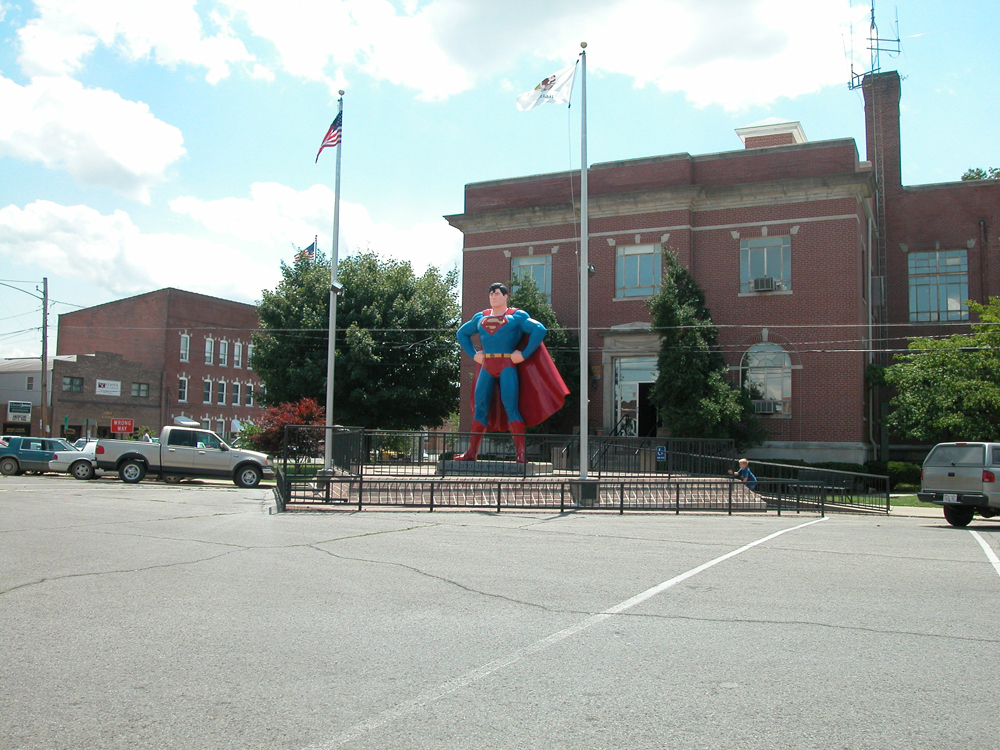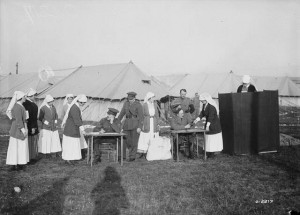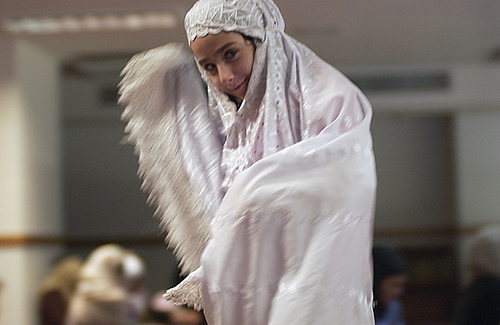Lesson One - Culture
1.4 Theoretical Perspectives on Culture
Music, fashion, technology, and values—all are products of culture. But what do they mean? How do sociologists perceive and interpret culture based on these material and nonmaterial items? Let’s finish our analysis of culture by reviewing them in the context of three theoretical perspectives: functionalism, conflict theory, and symbolic interactionism.
Functionalists view society as a system in which all parts work—or function—together to create society as a whole. In this way, societies need culture to exist. Cultural norms function to support the fluid operation of society, and cultural values guide people in making choices. Talcott Parsons referred to the function of culture as “latent pattern maintenance” meaning that the cultural practices that reproduce and circulate symbolic meanings and codes serve the function of maintaining social patterns of behaviour and facilitating orderly pattern change. Culture functions to ensure that the “meaning of life” remains stable.
By focusing on the function that culture plays in maintaining the stable equilibrium of society as a whole, functionalism can often provide interesting insights into cultural activities that seem irrational and bizarre on the surface. Bronislaw Malinowski (1925) described the way that the Trobriand Islanders of New Guinea used magic at each stage of preparation in fishing. From a rationalized, calculative point of view, magic ritual has nothing to do with the ability to catch fish. Fishing is a practical activity. However, as Malinowski pointed out, fishing for the Trobriand Islanders was also a risky and uncertain activity. It was dangerous, weather was unpredictable, the whereabouts of fish variable. Magic provided the fishers with a sense of control over their environment and a sense of confidence that enabled them to venture out into the dangerous waters day after day. Whether magic “worked” or not, it performed an important and rational function in the economic life of the Islanders. It provided a stable pattern of meaning that empowered the fishers to bring back an essential food resource.
Functionalists argue that cultural practices play a similar role in modern societies. The game of hockey for example, in which highly skilled men and women chase a disk of rubber around a frozen sheet of ice risking injury and expending energy for nonproductive purposes, is on the surface of it, an irrational and crazy activity. Yet millions of people watch hockey, millions of dollars are spent on it, millions of people’s identities are defined by their fandom, and millions of people’s collective sense of self-worth can hang on the fortunes and failures of their favourite hockey teams. Hockey is both, practically speaking, useless and yet clearly a highly valued activity. Why? As Durkheim argued with respect to religious rituals and totems, when people come together and focus their attention on a common object—in this case, a disk of rubber— thoughts and feelings pass back and forth between them until they take on a supra-individual force, detached from individuals themselves. A pre-rational collective consciousness emerges that provides the basis for group solidarity or a moral sense of group togetherness. Hockey functions as a site of collective convergence in a society that otherwise threatens to dissolve into incoherence as people’s everyday lives diverge in pursuit of individual self-interests.
In addition, many people point to the latent functions of hockey in that it provides an outlet for energies that might otherwise be directed to negative activities; it provides the basis for the cultivation of the self in the pursuit of excellence; it provides important lessons on the value of team play; and it provides an exercise activity that contributes to the health of the population. As many Canadians know, it is often easier to get a good physical workout when you are chasing a puck or a hockey ball than it is to convince yourself to go out into the cold to go for a jog or to do another repetition down at the gym.
|
This statue of Superman stands in the centre of Metropolis, Illinois. His pedestal reads “Truth—Justice— |
Symbolic interactionism is a sociological perspective that is most concerned with the face-to-face interactions between members of society. Interactionists see culture as being created and maintained by the ways people interact and how individuals interpret each other’s actions. Proponents of this theory conceptualize human interactions as a continuous process of deriving meaning from both objects in the environment and the actions of others. This is where the term “symbolic” comes into play. Every object and action has a symbolic meaning, and language serves as a means for people to represent and communicate their interpretations of these meanings to others. Those who believe in symbolic interactionism perceive culture as highly dynamic and fluid, as it is dependent on how meaning is interpreted and how individuals interact when conveying these meanings.
A symbolic interactionist approach to fashion for example would emphasize that fashion is a language that we use to interpret who others are and communicate who we are. Clothing fashions in particular represent an extremely intricate language of interpersonal communication, as anyone who has gone shopping with a friend for clothes is well aware. What are the variables involved in the question, “Does this look good on me?” Clothes are never simply “functional,” because even the most functional and practical Mountain Equipment Co-op style clothing makes a statement about the wearer. Georg Simmel (1904) noted that, while extremely transitory, the establishment of fashions always has to contend with two seemingly contradictory tendencies—the desire of individuals to fit in and conform to what is fashionable and the desire of individuals to stand out as individuals. Being fashionable involves a highly nuanced negotiation between these two poles.
Critical sociologists view social structure as inherently unequal, based on power differentials related to issues like class, gender, race, and age. For a critical sociologist, culture is seen as reinforcing and perpetuating those inequalities and differences in power. Unlike the functionalists who examine culture in terms of the general interests it supports, or symbolic interactionists who emphasize how people come to mutual understandings through cultural practices and interactions, critical sociologists examine how inequalities and power relationships are maintained by a culture’s value system.
|
Figure 3.13. Women serving in the armed forces during World War I, |
Some norms, formal and informal, are practised at the expense of others. After Confederation in 1867, women were not allowed to vote in federal elections in Canada until 1919 and it was not until 1940 that they could vote in provincial elections in Quebec. (Women had been able to vote, as property owners, prior to Confederation.) It was not until 1947 and 1948 that Canadians of Japanese, Chinese, and South Asian origins were permitted to vote. Native Canadians, who had been able to vote in some regions up until 1898, had their rights revoked and were not permitted to vote federally again until 1960. In each case of discrimination, it was dominant cultural attitudes toward the subordinate groups that served as the rationale for refusing them the franchise. For example, in 1898 the member of Parliament for Saint John argued that “Indians knew no more of politics ‘than a child two years old’” (Elections Canada 2014). Because of prevailing paternalistic and racist attitudes, it was argued that aboriginal people would somehow be more susceptible to manipulation by politicians than other Canadians.
A key focus of cultural analysis in critical sociology is the critique of ideology. An ideology is a set of ideas that serve to support, justify or conceal existing power relationships in society. Classical liberalism for example is a set of ideas that emphasize the freedom of the individual to pursue his or her own self-interest without the interference of others, or of the state, unless the individual impinges on the right of others to do the same. The idea espoused by Enlightenment thinkers, utilitarians, and other early advocates of liberal thought was that the aggregate of freely made decisions would lead to the best and most rational outcomes—“the greatest good for the greatest number”—whether in democratic politics or in the operation of supply and demand in markets. Liberalism is also the source of the mythical notion of the “self-made man,” the individual who through determination, intelligence, and good decision making rises up from poverty and becomes a millionaire. As in all ideology, there is a kernel of truth in liberalism. However, to the degree that liberalism supports not only personal freedoms but also the property rights of corporations, it is clear that it is an ideology that perpetuates the power of capital. By focusing on the individual—individual rights, individual self-interest, individual responsibility—liberalism also makes it difficult to see that power structures are not the product of individual initiative but of historical, structural inequalities based on class, gender, race, and colonization. In the liberal culture of capitalism, we continue to strive on an individual basis toward the promise of success, which perpetuates the belief that the wealthy deserve their privileges.
We began this chapter by asking what culture is. Culture comprises all the practices, beliefs, and behaviours of a society. Because culture is learned, it includes how people think and express themselves. While we may like to consider ourselves individuals, we must acknowledge the impact of culture; we inherit thought language that shapes our perceptions and patterned behaviour, including about issues of family and friends, and faith and politics.
|
This child’s clothing may be culturally specific, but her facial expression is universal. |
To an extent, culture is a social comfort. After all, sharing a similar culture with others is precisely what defines societies. Nations would not exist if people did not coexist culturally. There could be no societies if people did not share heritage and language, and civilization would cease to function if people did not agree to similar values and systems of social control. Culture is preserved through transmission from one generation to the next, but it also evolves through processes of innovation, discovery, and cultural diffusion. We may be restricted by the confines of our own culture, but as humans we have the ability to question values and make conscious decisions. No better evidence of this freedom exists than the amount of cultural diversity within our own society and around the world. The more we study another culture, the better we become at understanding our own.


